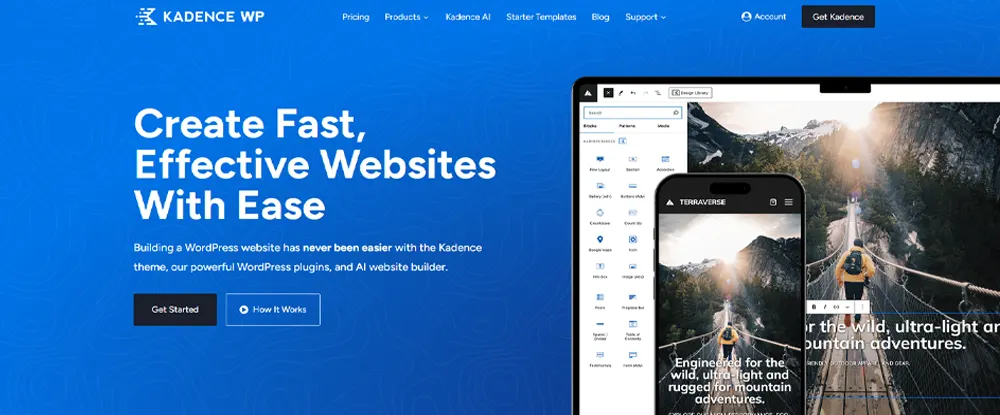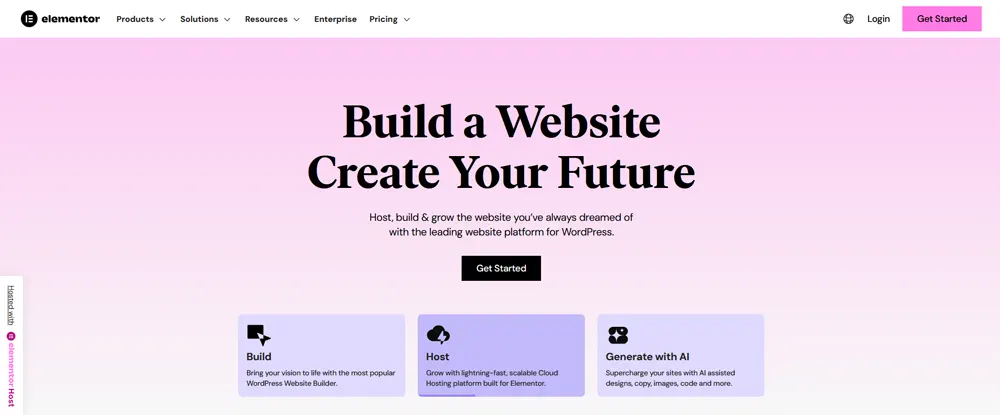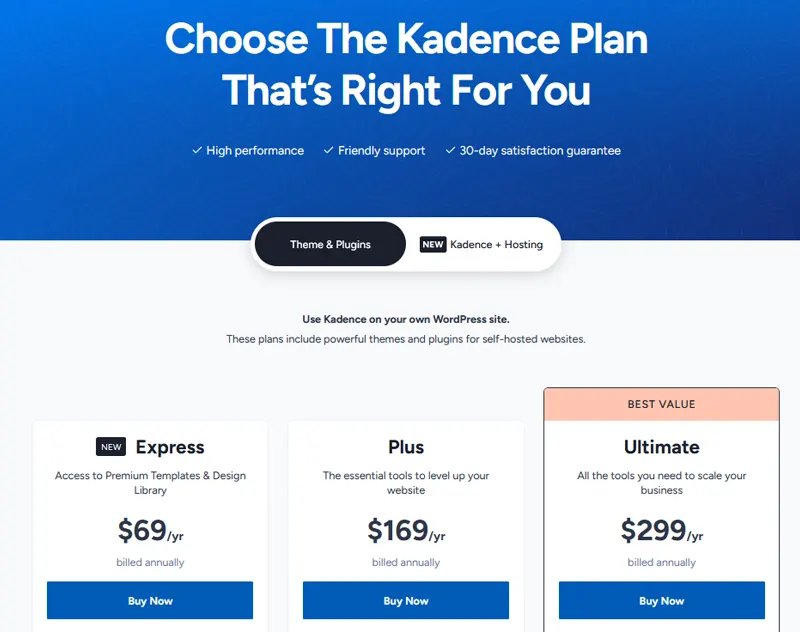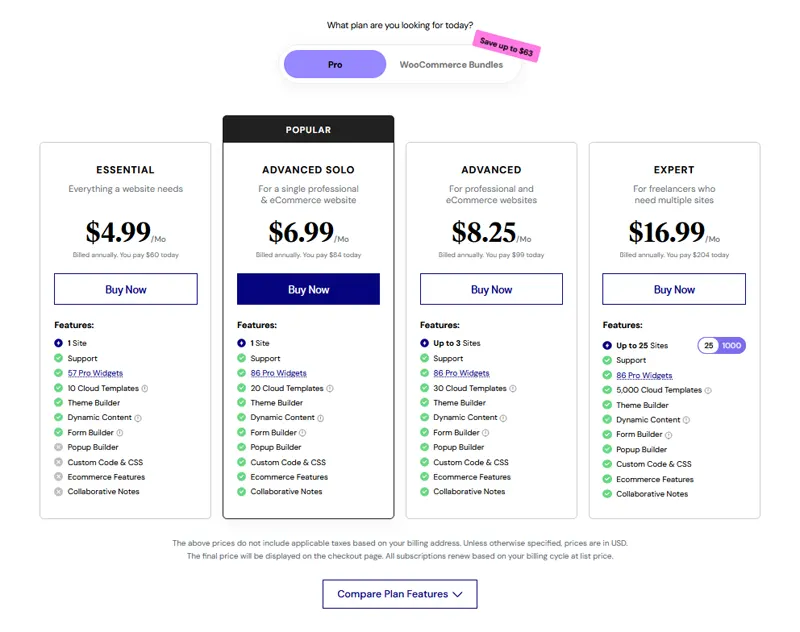Kadence vs Elementor: A Comprehensive Comparison of Two Best WordPress Page Builder
WordPress users looking to design visually appealing websites without diving into code often turn to page builders. Among the top contenders in the market today are Kadence Blocks and Elementor. Both offer powerful tools to help users build custom websites, but they differ significantly in performance, flexibility, ease of use, pricing, and features. In this article, we’ll compare kadence vs elementor across key areas to help you decide which is the best wordpress page builder that fit for your WordPress site.
Overview of Each Builder
Kadence vs Elementor: Which Page Builder is Right for You?
Kadence Blocks
Kadence Blocks is a powerful WordPress plugin designed to extend the native Gutenberg editor by adding advanced blocks and design options. It allows users to create professional-looking websites without heavy page builders. With responsive controls, pre-designed layouts, and customization features, Kadence Blocks makes building modern websites simple and efficient.

The plugin offers blocks like advanced galleries, accordions, tabs, forms, and testimonials, giving creators flexibility in design. It also emphasizes speed and performance, ensuring lightweight code for faster loading times. Whether used for blogs, business websites, or eCommerce, Kadence Blocks provides a user-friendly, scalable solution to enhance the Gutenberg editing experience.
Strengths:
Elementor
Elementor is one of the most popular WordPress page builders, known for its intuitive drag-and-drop interface and design flexibility. It enables users to build visually stunning websites without coding, offering a wide range of widgets, templates, and responsive design options to suit bloggers, businesses, and eCommerce store owners alike.

Available in both free and Pro versions, Elementor provides features like theme building, popup creation, WooCommerce integration, and advanced styling controls. Its vast ecosystem of add-ons and large community support make it a powerful tool for web creators who want professional designs while maintaining full control over their website’s performance.
Strengths:
Strengths:
Ease of Use
Kadence Blocks
Kadence Blocks integrates directly into the Gutenberg editor, making it feel like a natural extension rather than a separate system. If you're already familiar with Gutenberg, the learning curve is minimal. However, users new to Gutenberg may find the interface less intuitive than Elementor’s drag-and-drop builder.
Pros
Cons
Elementor
Elementor offers a fully visual builder, allowing users to drag and drop elements onto a live preview of their site. It's designed for beginners and non-developers, with real-time design changes and an intuitive UI.
Pros
Cons
Winner:
Elementor (for beginners and visual designers)
Performance and Speed
Kadence Blocks
Kadence Blocks is optimized for lightweight performance, running directly within the Gutenberg editor. It produces clean, minimal code that reduces load times and boosts Core Web Vitals. This makes it ideal for fast, SEO-friendly websites. Its speed-first approach ensures smooth user experiences, especially on mobile and resource-limited hosting environments.
Pros
Cons
Elementor
Elementor delivers extensive design freedom but often adds extra CSS, JavaScript, and DOM elements, increasing page size and reducing speed. While recent updates introduced performance improvements, it still requires careful optimization. On resource-limited servers, Elementor websites can feel heavier compared to Gutenberg-based Kadence sites, impacting both speed and performance.
Pros
Cons
Winner:
Kadence Blocks (for speed and performance)
Design Flexibility and Features
Kadence Blocks
Kadence Blocks extends Gutenberg with lightweight, customizable blocks such as forms, accordions, galleries, and tabs. It emphasizes simplicity and clean design while maintaining speed. Though it lacks advanced effects, it provides responsive controls and layout options that cover most needs, making it a balanced solution for practical website building.
Pros
Cons
Elementor
Elementor is renowned for its drag-and-drop editor and extensive customization. With hundreds of widgets, templates, animations, and theme-building tools, it allows pixel-perfect design without coding. However, this power comes with heavier code and resource demands, requiring optimization. Its unmatched flexibility appeals to designers wanting advanced control and visual creativity.
Pros
Cons
Winner:
Elementor (for creative and complex design needs)
Theme and Template Integration
Kadence Blocks
Kadence integrates seamlessly with its own Kadence Theme, which is lightweight and performance-focused. It’s perfect for users who want an optimized experience with minimal complexity.
Pros
Cons
Elementor
Elementor, on the other hand, provides extensive design flexibility with its Theme Builder (available in the Pro version), allowing users to create custom headers, footers, and more. It also comes with a massive library of templates.
Pros
Cons
Winner:
Elementor for its complete theme-building capability and extensive template library, despite the performance trade-off.
Third-Party Ecosystem and Community Support
Kadence Blocks
When it comes to Third-Party Ecosystem and Community Support, Elementor has a significant edge over Kadence in terms of both the size and variety of resources available. Kadence has a growing but smaller ecosystem. While its official support is excellent and its user community is active, the number of third-party add-ons is limited.
Pros
Cons
Elementor
Elementor, by contrast, has a massive global user base and an extensive collection of third-party plugins, widgets, and templates. It also boasts a well-established community with many tutorials and online resources.
Pros
Cons
Winner:
Elementor for its vast ecosystem and community support, which outweighs Kadence's smaller but focused offerings.
Pricing Comparison
Kadence Blocks
Kadence Blocks offers a free version with essential blocks. The Pro version starts at $69/year, which includes additional blocks, advanced features, and dynamic content options. There’s also a Kadence Bundle that includes the Kadence Theme, Kadence Blocks Pro, and other premium tools.

Elementor
Elementor also has a free version, but its full potential is unlocked with Elementor Pro, starting at $59/year for a single site. Pro gives access to the theme builder, WooCommerce builder, popups, and all widgets.

Winner:
Kadence is better value for performance and essentials.
Elementor is worth the cost for design-heavy projects.
Conclusion
Both Kadence Blocks and Elementor are powerful tools, but they cater to different types of users.
Ultimately, the best choice depends on your specific needs. For a lean, future-proof site—go with Kadence. For a visually rich, interactive site—Elementor is your tool.


